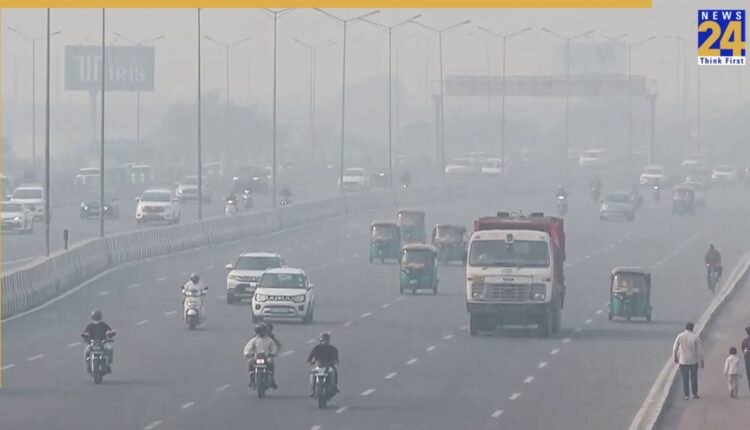Delhi AQI reaches season high, Wazirpur and Rohini among worst-hit areas with 400+ readings News24 –
Delhi AQI: Delhi’s air quality deteriorated sharply on Sunday, November 9, with the city’s Air Quality Index (AQI) climbing to 391, the highest level of the season so far. The air quality in the national capital has remained in the ‘very poor’ category for over a week, with no signs of relief as winter conditions set in, trapping pollutants and worsening smog across the region. With winter now setting in, the AQI is expected to deteriorate further without aggressive mitigation measures.
Delhi AQI hits season high
According to data from the Central Pollution Control Board (CPCB), Delhi’s AQI was recorded 391 on Sunday, at 6 am. Delhi has been struggling with worsening pollution levels for the past week, as dropping temperatures, stagnant winds, stubble burning, meteorological conditions and rising vehicular and industrial emissions continue to trap pollutants close to the ground. Anand Vihar, Akshardham, AIIMS, and ITO reported thick layer of smog as the AQI remains ‘severe’ in these areas.
#WATCH | Delhi: Visuals around ITO as toxic smog lingers in the air this morning. AQI in the area is in the ‘Severe’ category at 420, as per the Central Pollution Control Board (CPCB). pic.twitter.com/F7rdU6BVDw
— ANI (@ANI) November 9, 2025
Delhi AQI: Wazirpur, Rohini among worst-hit areas
In several areas of Delhi, AQI readings crossed the 400 mark, placing them in the ‘severe’ category. Wazirpur, Rohini, Anand Vihar are among the worst hit. Wazirpur (436), Vivek Vihar (424), Rohini (435), Patparganj (425), Jahangirpuri (433), Pusa (407), Punjabi Bagh (415), R K Puram (421), Anand Vihar (412), ITO (420), Ashok Vihar (416), Aya Nagar (368), Bawana (436), Dwarka-Sector 8 (381), IGI Airport (358), Lodhi Road (377), Najafgarh (347), Shadipur (361).
Delhi AQI: Residents raise health concerns
Amid deteriorating air quality levels, residents in Delhi have raised concerns over the rising pollution and its impact on health. Residents have complained of respiratory problems, dry eyes, bleeding nose and difficulty in commuting due to the morning smog. Stage II of the Graded Response Action Plan (GRAP) remains in force across the NCR to curb pollution levels. Measures under this stage include a ban on the use of diesel generators (except for essential services), increased frequency of mechanised road cleaning and water sprinkling, and enhanced enforcement against open burning of waste.

